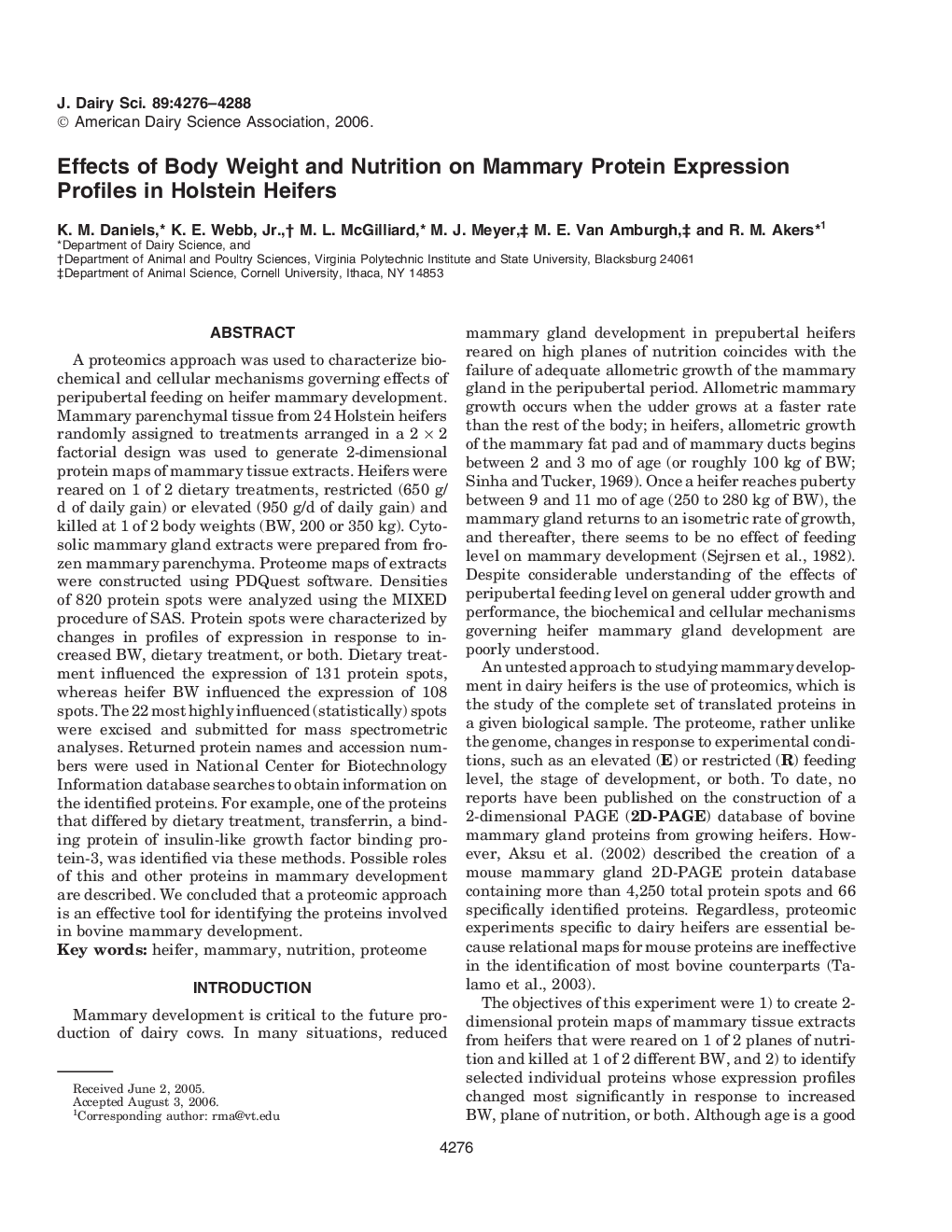| Article ID | Journal | Published Year | Pages | File Type |
|---|---|---|---|---|
| 2441054 | Journal of Dairy Science | 2006 | 13 Pages |
Abstract
A proteomics approach was used to characterize biochemical and cellular mechanisms governing effects of peripubertal feeding on heifer mammary development. Mammary parenchymal tissue from 24 Holstein heifers randomly assigned to treatments arranged in a 2Â ÃÂ 2 factorial design was used to generate 2-dimensional protein maps of mammary tissue extracts. Heifers were reared on 1 of 2 dietary treatments, restricted (650 g/d of daily gain) or elevated (950 g/d of daily gain) and killed at 1 of 2 body weights (BW, 200 or 350Â kg). Cytosolic mammary gland extracts were prepared from frozen mammary parenchyma. Proteome maps of extracts were constructed using PDQuest software. Densities of 820 protein spots were analyzed using the MIXED procedure of SAS. Protein spots were characterized by changes in profiles of expression in response to increased BW, dietary treatment, or both. Dietary treatment influenced the expression of 131 protein spots, whereas heifer BW influenced the expression of 108 spots. The 22 most highly influenced (statistically) spots were excised and submitted for mass spectrometric analyses. Returned protein names and accession numbers were used in National Center for Biotechnology Information database searches to obtain information on the identified proteins. For example, one of the proteins that differed by dietary treatment, transferrin, a binding protein of insulin-like growth factor binding protein-3, was identified via these methods. Possible roles of this and other proteins in mammary development are described. We concluded that a proteomic approach is an effective tool for identifying the proteins involved in bovine mammary development.
Related Topics
Life Sciences
Agricultural and Biological Sciences
Animal Science and Zoology
Authors
K.M. Daniels, K.E. Jr., M.L. McGilliard, M.J. Meyer, M.E. Van Amburgh, R.M. Akers,
